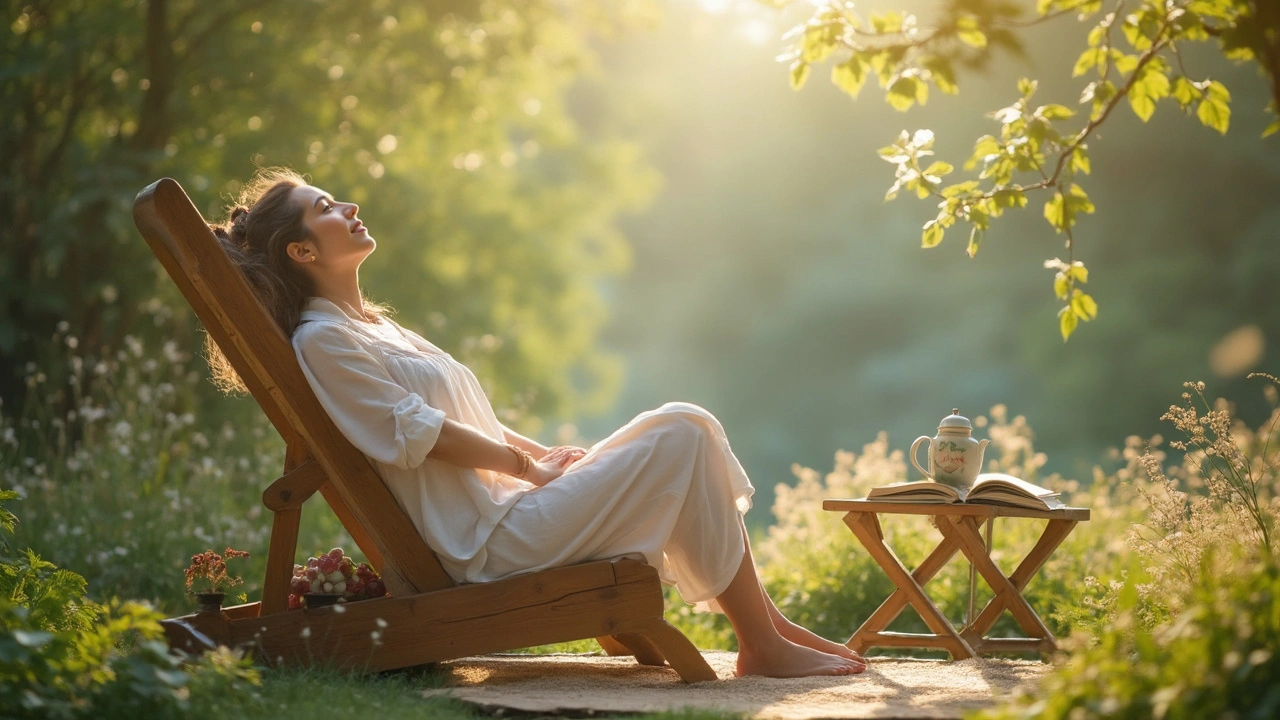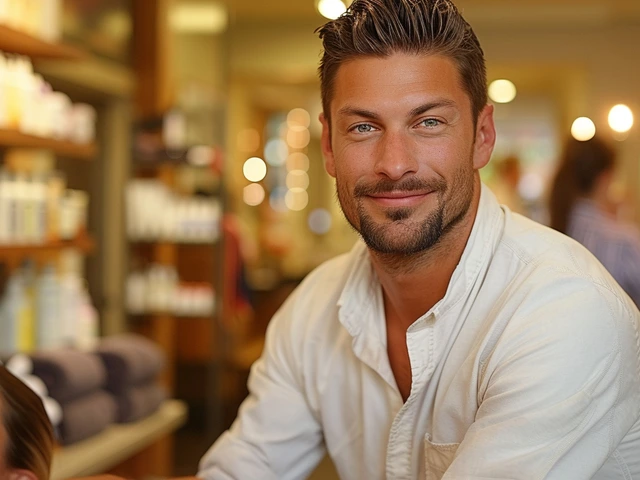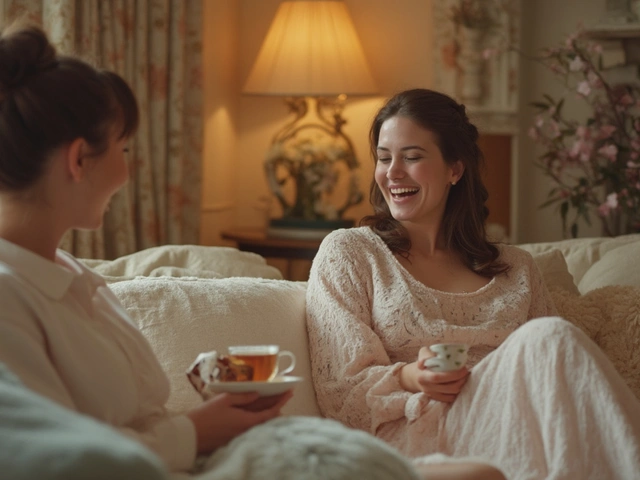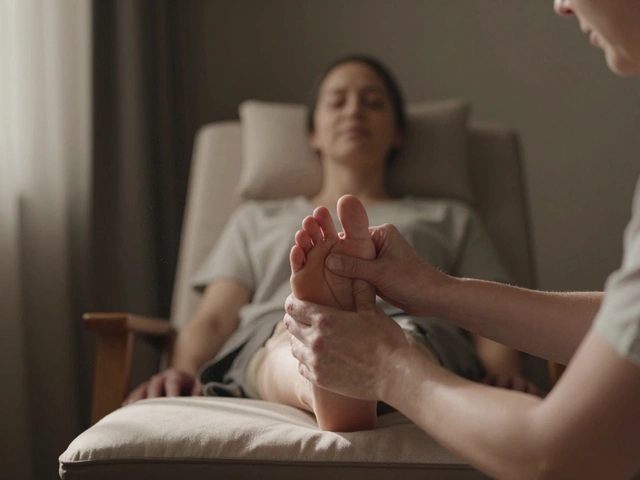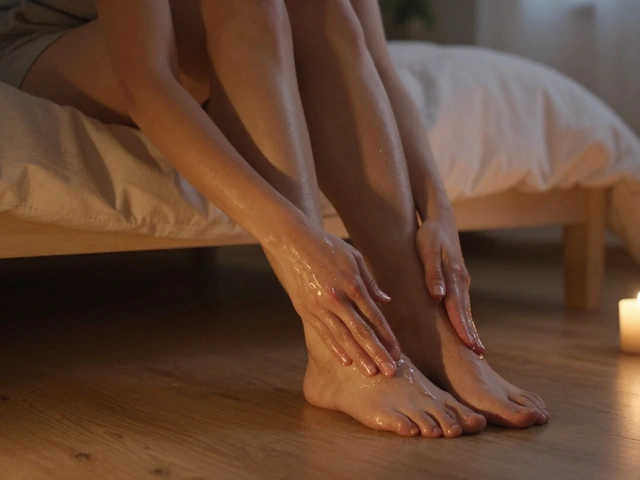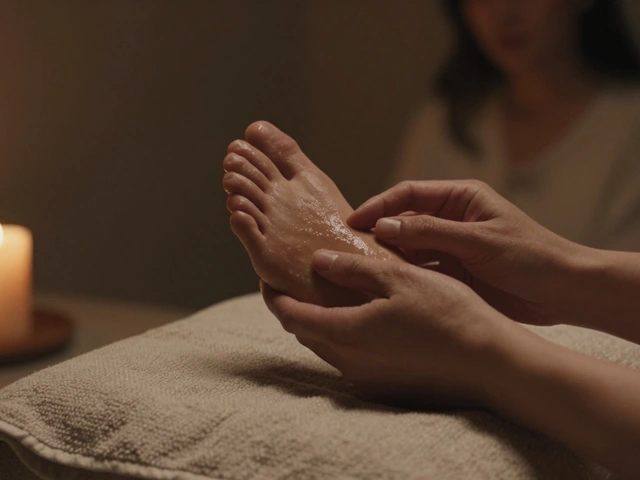Let's be honest, life's a bit of a rollercoaster, right? Between work, family, and everything in between, who doesn't want a breather? Enter reflexology: one of the chillest ways to relax without booking a week-long vacation. But what's behind this so-called magic? It's about understanding that different points on your feet are believed to link with various parts of your body. Think of it like that pinch you give your mate on the arm to get their attention — it’s about pressure points doing some good.
Now, before you shrug it off as just another fancy foot rub, reflexology's got a history that backs it up. This isn't just a fad; it's been practiced for hundreds of years, and folks swear by it for bringing on serious relaxation vibes. Curious yet? Let’s kick off those shoes, dive into how it works, and see if it's something that can help take stress down a notch or two.
- Understanding Reflexology Basics
- How Reflexology Works
- Benefits of Reflexology
- Practical Tips for Trying Reflexology
- Incorporating Reflexology into Daily Life
Understanding Reflexology Basics
Alright, reflexology is not just about poking your feet in a fancy spa. It's actually an ancient practice that believes certain spots on your feet (and hands) connect with other parts of your body. Imagine having a map of your whole body on your foot — wild, right? Each spot, or "reflex point," works kind of like a remote control. Press the right button, and you could be soothing your liver, shoulders, or even your brain.
Interested in some history? Reflexology dates back thousands of years, with the first evidence traced to ancient Egypt and China. That's some serious history! They've been utilizing this for relaxation and health long before tablets and streaming services tried to do the same.
But how does it really all go down? Trained reflexologists use their fingers to apply pinpoint pressure on these spots, and the idea is this may help improve circulation, reduce tension, and give your body a bit of a health boost. Is it backed by modern science? Well, results can vary, but many who give it a whirl report feeling more relaxed.
Ever thought about the specifics, like how the foot is divided into zones? Each foot represents one half of the body. So, the left foot corresponds to all the organs and body parts on your left side, and vice versa for the right. Practitioners believe they can tell a lot about your overall health just from touching these zones.
So, if you're keen to kick off those shoes and explore this unique relaxation path, you've got a basic grasp on what makes reflexology tick. It's more than just a fancy massage; it's a technique reaching back to days of the ancient world, and maybe, it could be the key to finding your chill in today’s fast-paced life.
How Reflexology Works
Alright, let's get into what's really making reflexology tick. At the heart of this practice is the idea that your feet are like a remote control to the rest of your body. Picture this: those little pressure points on your feet are mapped to various body parts, including organs and muscles. So, when a reflexologist gives your feet a workout, it's like sending good vibes throughout your entire system.
This method is rooted in the belief that working these pressure points can help improve your overall health and balance the body's energy. And it's not all about random foot poking. There’s a method to this madness. Reflexologists apply specific amounts of pressure to these zones, aiming to kickstart your body’s natural healing process.
According to the Association of Reflexologists, "Reflexology can be beneficial for everyone. It may bring relief from a range of acute and chronic conditions, improve well-being, and support better sleep and stress relief."
If you're wondering how smart it is to depend on those pressure points, well, there’s some science backing these ideas. Reflexology is thought to induce a relaxation response, which might lower stress and could help with conditions like headaches or tension.
- Stress Relief: By focusing on feet, reflexology aims to calm the nervous system.
- Improved Circulation: Massaging those foot zones might help blood flow better, making you feel more energized.
- Detoxification: Encouraging the body's natural processes to flush out toxins.
And just to sprinkle in a bit more realism, here's a quick stat: The Reflexology Association conducted a study showing a significant reduction in stress and anxiety levels after consistent therapy sessions.

Benefits of Reflexology
Alright, so why should you care about reflexology? Let's dig into the good stuff: the benefits. If you've ever tried even a short session, you'll know this isn't just any part of pampering — it’s like a chill-out button for your whole body.
Firstly, reflexology is majorly known for kicking stress out the door. A session can lower stress and anxiety levels by helping you unwind and feel more balanced. It’s like hitting 'pause' on your stress-o-meter.
Beyond just feeling relaxed, reflexology can help with better sleep. Many folks find it easier to drift off after a reflexology session. It’s like your body’s hidden switch that helps turn the sleep mode on.
Another cool perk? Reflexology might give your immune system a little boost. The idea is that by hitting specific pressure points, it helps your body keep things in check and functioning properly.
And for those of us who deal with aches and pains, especially in areas like the feet, back, or neck, reflexology can work as a natural pain relief option. It's not a magical cure, but people often notice a reduction in discomfort after a session.
If you dig numbers, check this out:
| Benefit | Reported Improvement (%) |
|---|---|
| Stress relief | 75% |
| Improved sleep | 60% |
| Boosted immune function | 50% |
| Pain reduction | 55% |
These numbers give a quick peek at how effective reflexology has been for many. Hopefully, it's clear why a bit of guided foot-poking might just be your new best friend in handling daily stress and a few other troubles!
Practical Tips for Trying Reflexology
Dipping your toes into reflexology doesn't have to be complicated. Here are some handy tips to get started right in your living room. You won't need a spa to feel the magic; just a comfy chair and a little know-how.
First off, get familiar with the basic maps of the feet. Gravity pulls all the tension down, and each spot correlates to different body parts. For instance, your toes are connected to your head — might sound odd, but that's where you'll be focusing if you're after some mental chill.
- Start Simple: Begin with gentle pressure. Don't overdo it, especially if it's new for you. Feel around your soles and see which areas feel tense or tender.
- Use a Reflexology Chart: Keep a handy chart nearby as a guide. It helps to know where to press to target specific areas like shoulders or digestion.
- Be Consistent: Like anything, the more you do it, the better the results. Try to set aside 15 minutes a few times a week.
- Hydrate: Drinking water post-session is crucial. It helps in flushing out the toxins released during the rubs.
- Professional Guidance: If trying it solo seems overwhelming, a session or two with a pro can teach you the ropes.
A cool stat to note: a study by the University of Portsmouth found that regular reflexology sessions improved sleep quality by 70% among participants. Isn't that wild?
Practice makes perfect. Pay attention to how your body reacts and adjust your technique. Your feet might hold the secret to keeping stress at bay, so walk on over to a more relaxed life.
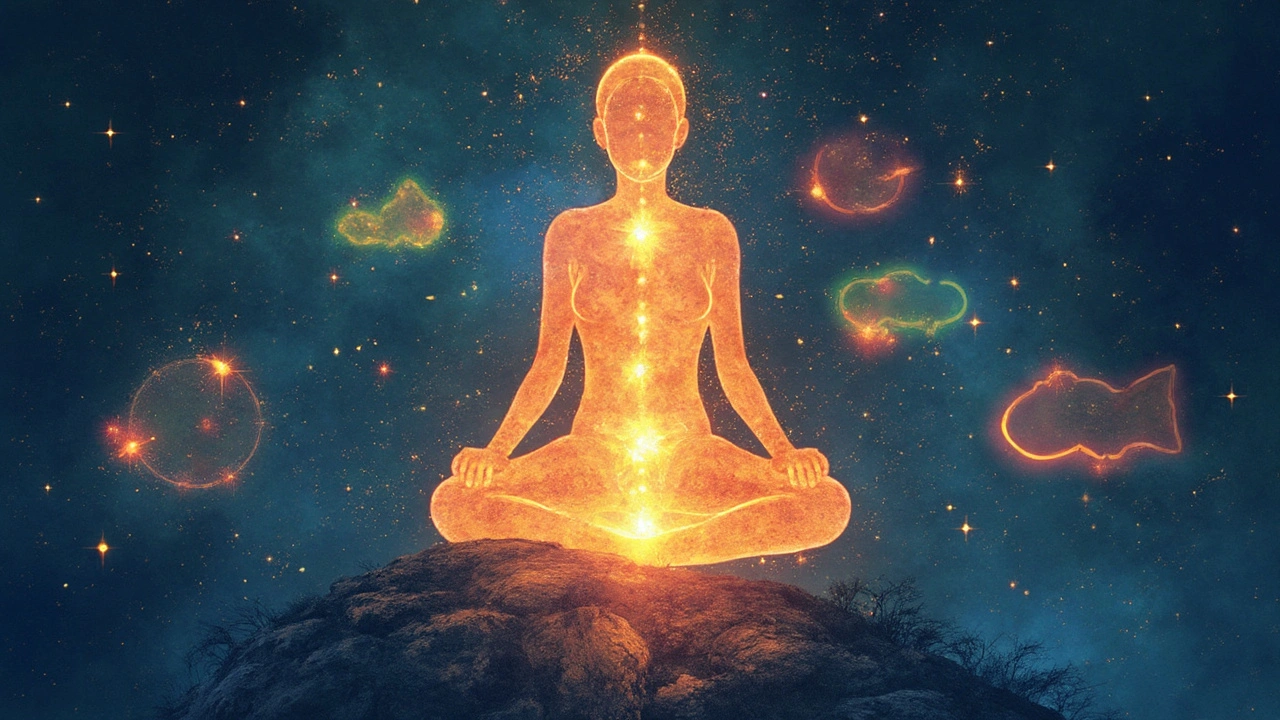
Incorporating Reflexology into Daily Life
Ever felt like you need a little more zen in your daily routine? Reflexology might be just what you’re looking for. It's not only for special occasions or spa days; you can easily weave it into your usual schedule. Here's how:
Start by setting aside a few minutes each day. Whether it’s in the morning to kick off a fresh start or at night to unwind, consistency is key. Maybe think of it as part of your self-care toolkit, kind of like brushing your teeth but for your stress levels.
- Foot Rolling: One simple way is to roll a tennis ball under your foot. Apply gentle pressure and roll from the toes to the heel. This not only feels great but also helps ease tension.
- DIY Techniques: Fancy doing it yourself? Grab a reflexology chart and start with some simple pressure points. Just a few minutes focusing on specific areas like the pads of your feet can help target energy and relaxation.
- In the Shower: Why not use shower time as a quick reflexology session? While lathering up, spend an extra minute applying pressure to the arches of your feet.
If you're keen on making this a shared experience, consider it as a fun partner activity. Swap reflexology sessions with your buddy or partner, sharing the benefits and maybe even a bit of a giggle as you navigate each other's feet.
Remember, the aim is to make relaxation a regular part of your day, not just when you’re feeling overwhelmed. Whether solo or with a friend, reflexology is more than a treat—it's a way to keep stress at bay, whenever you need it.

